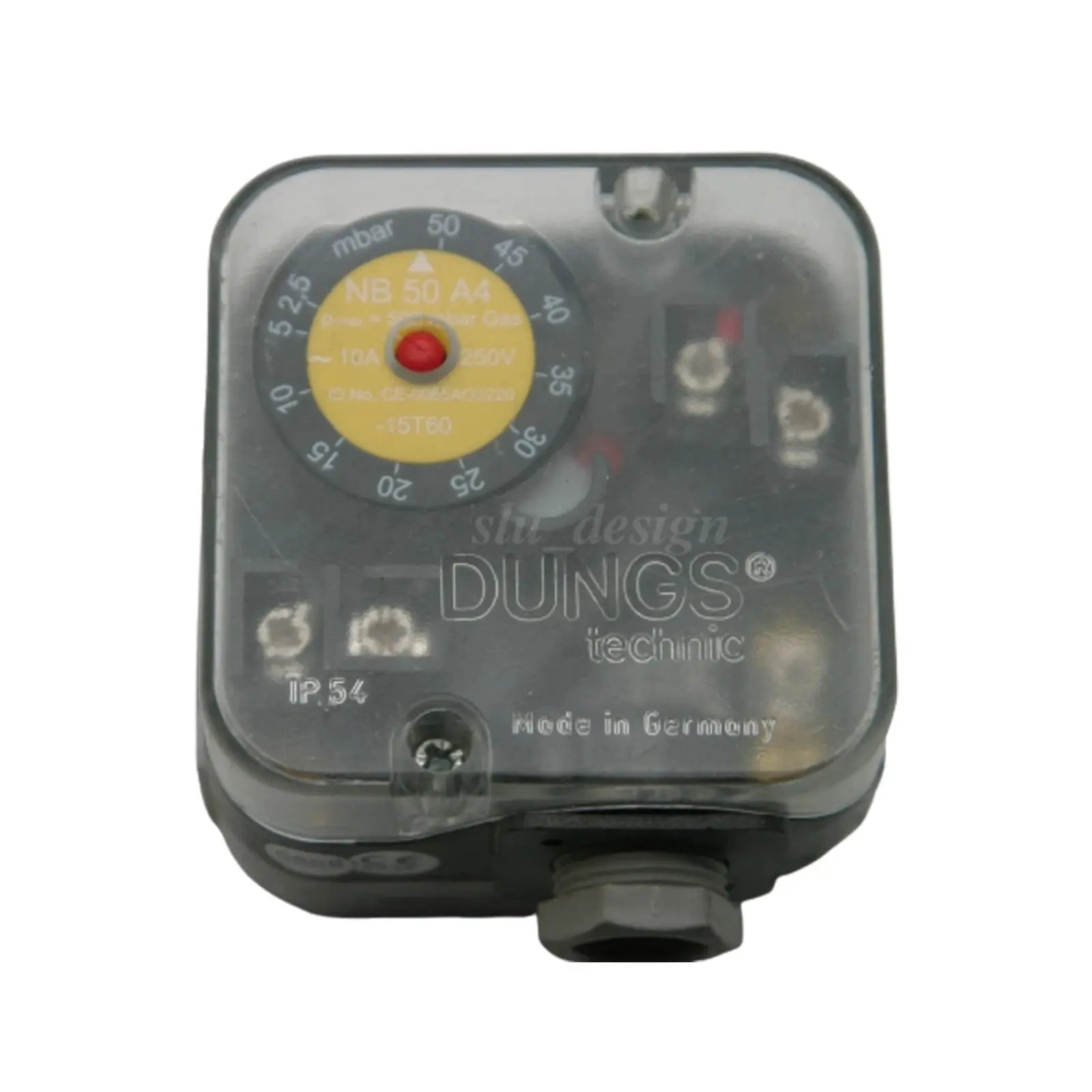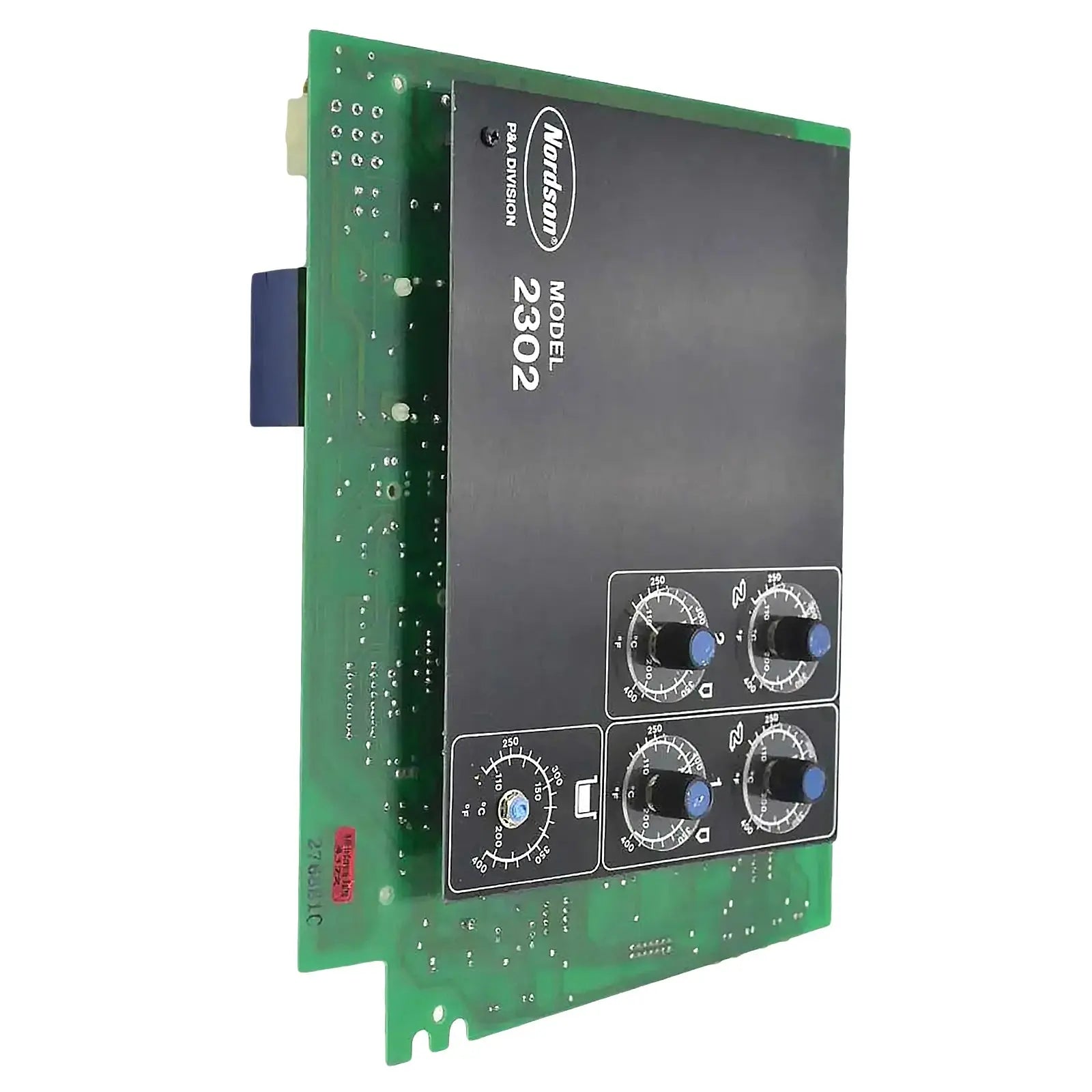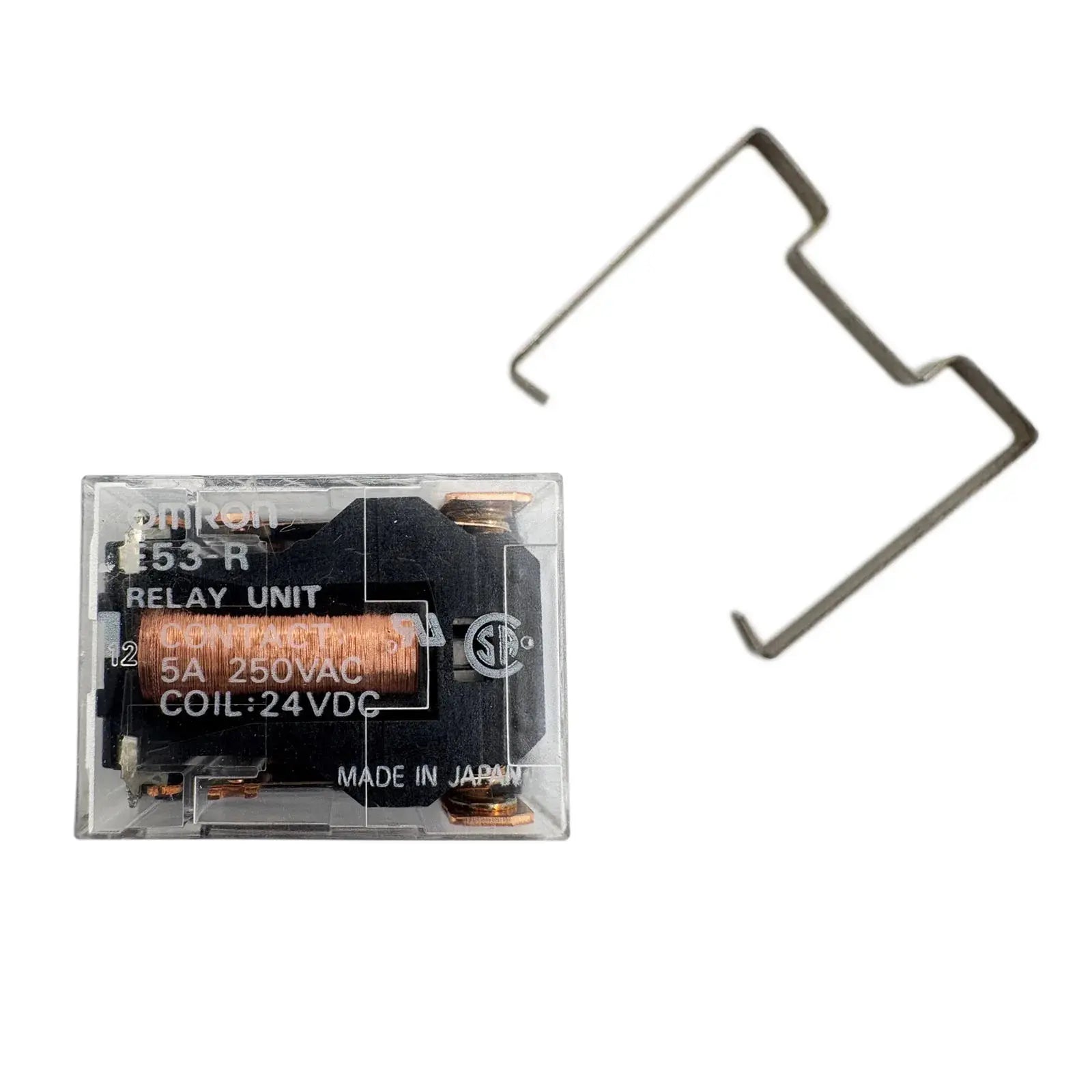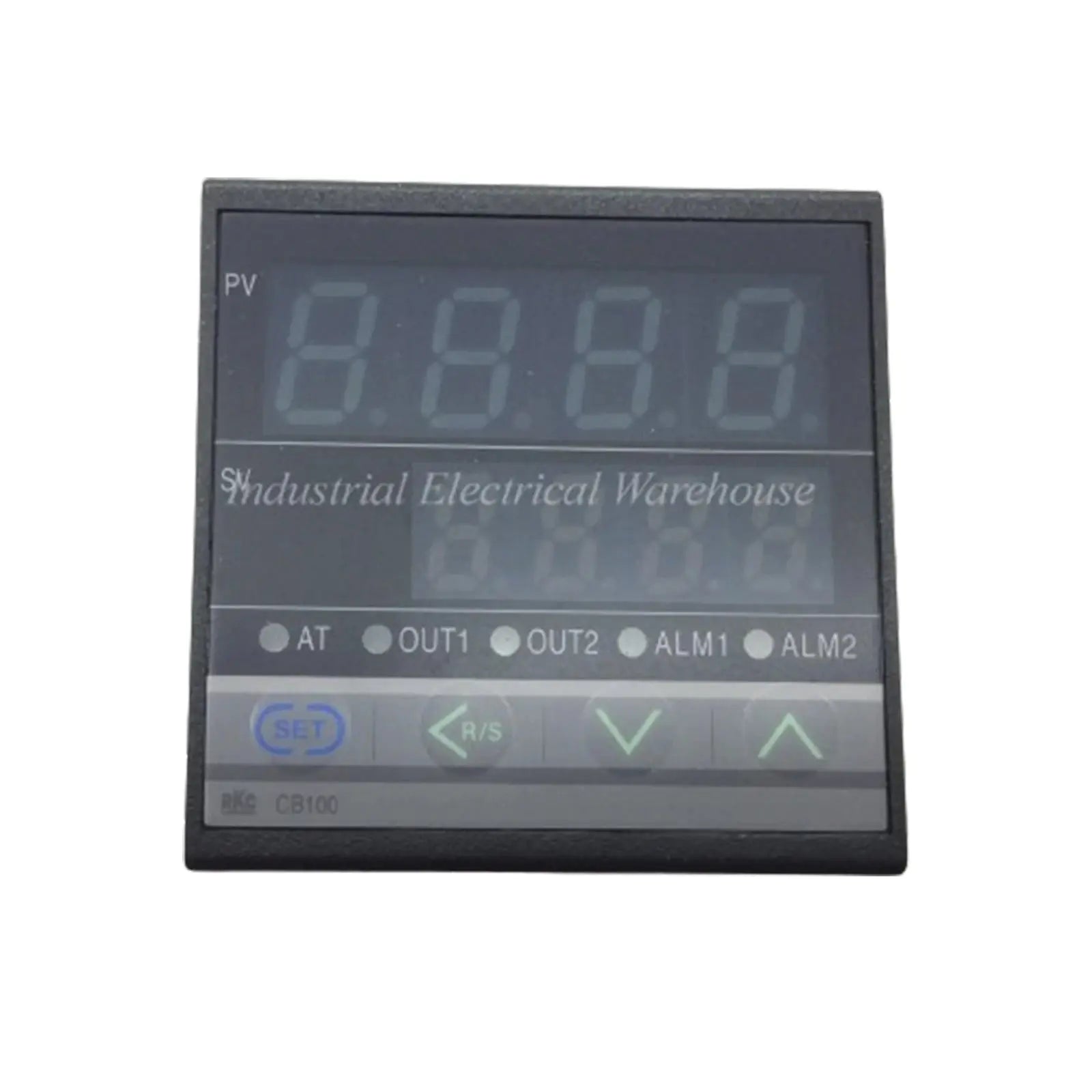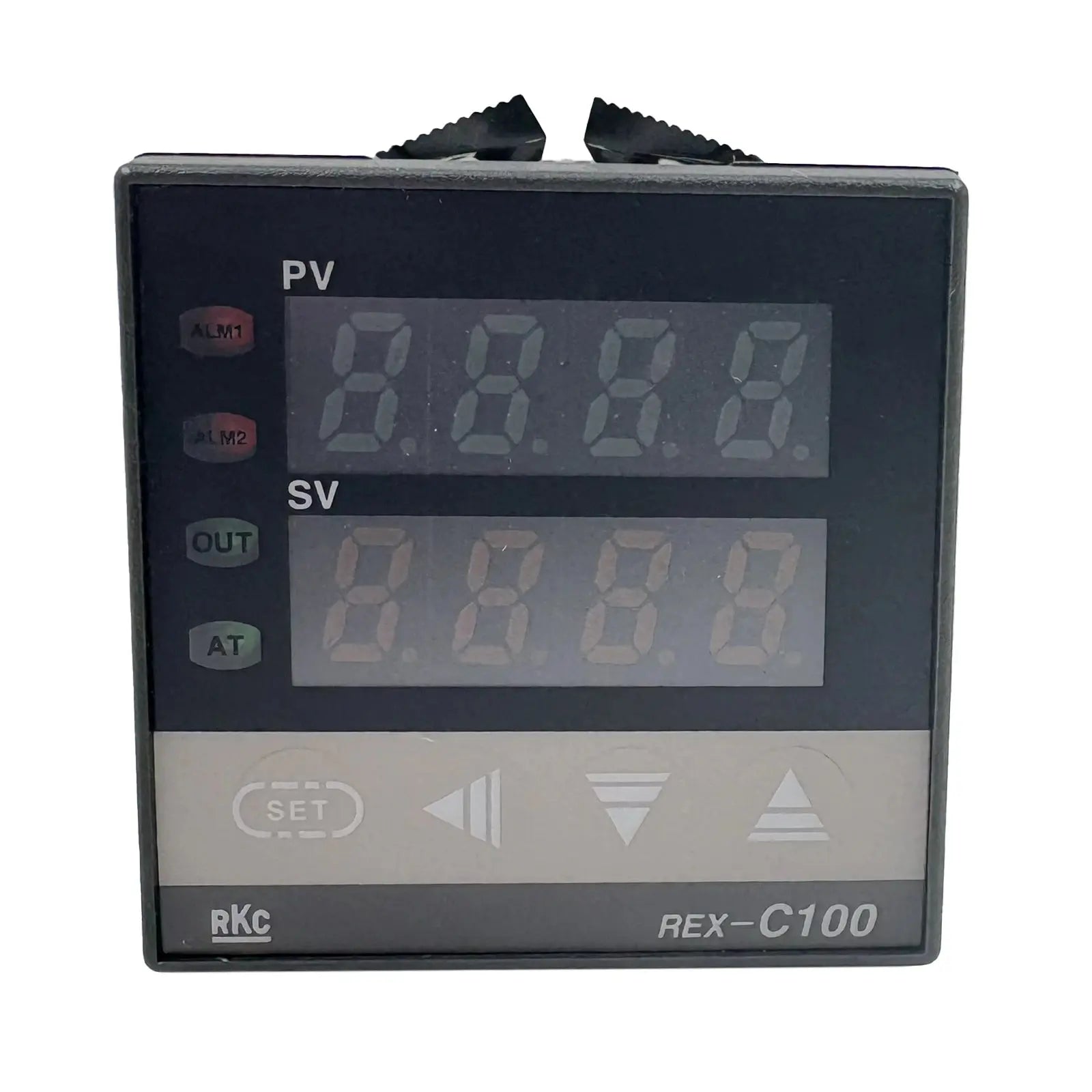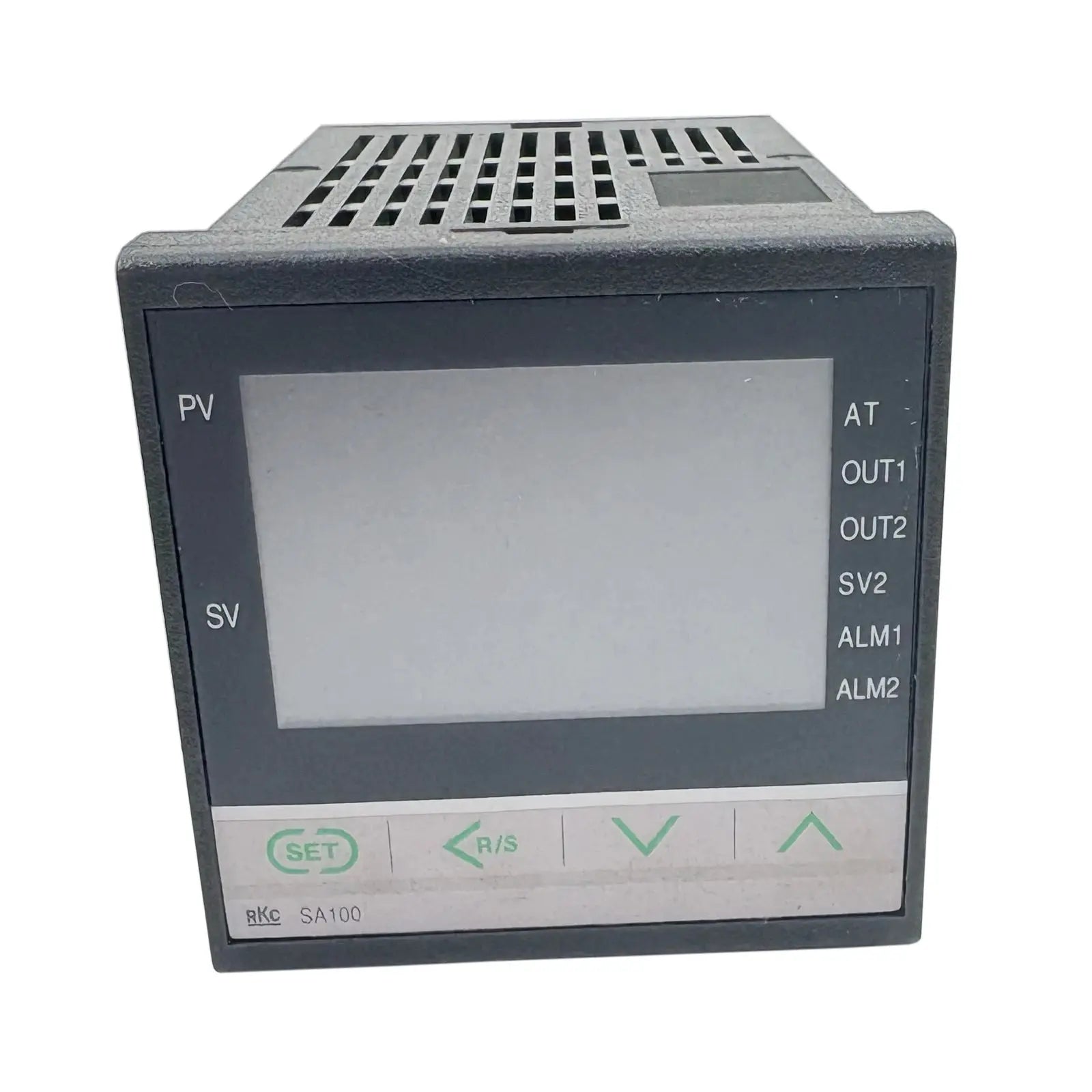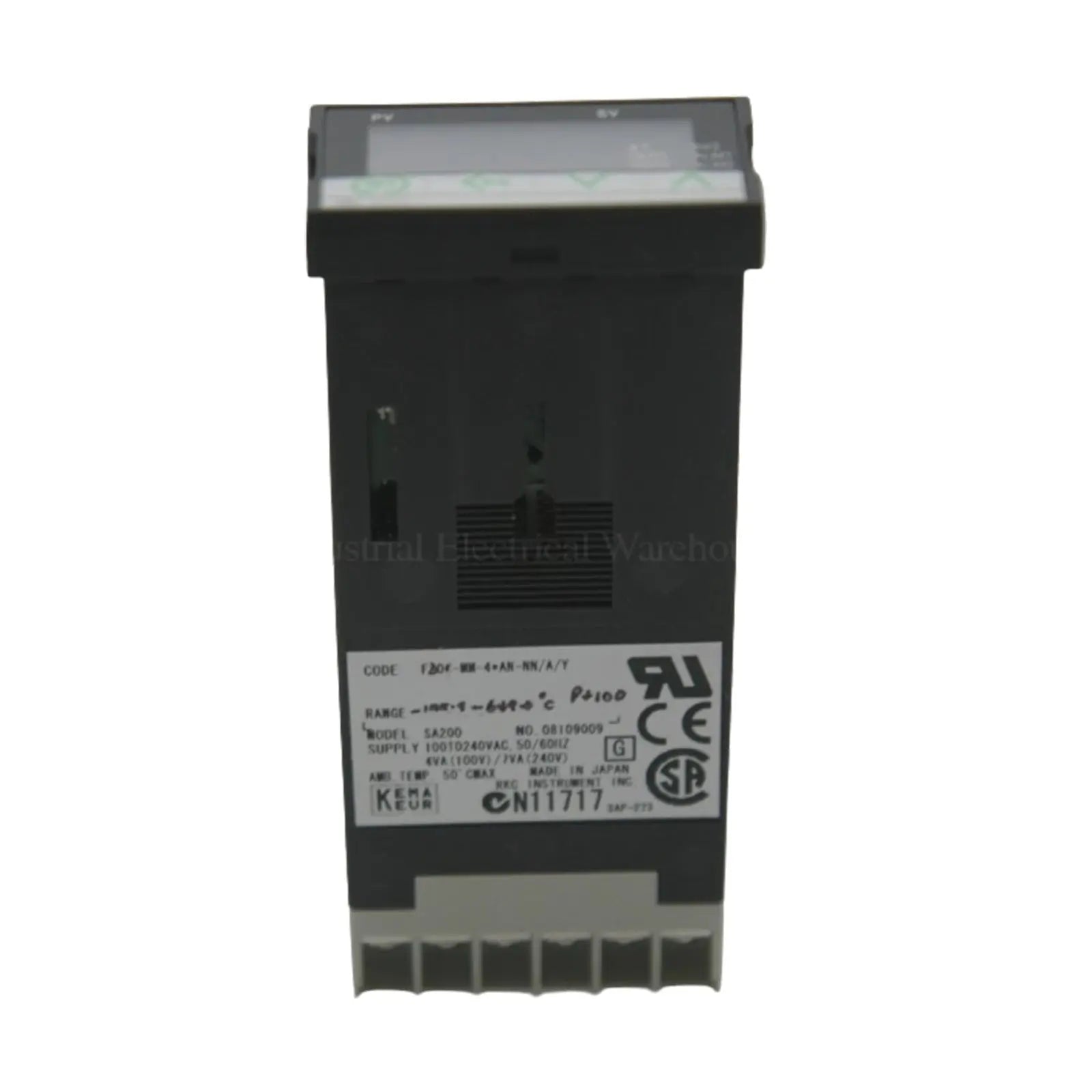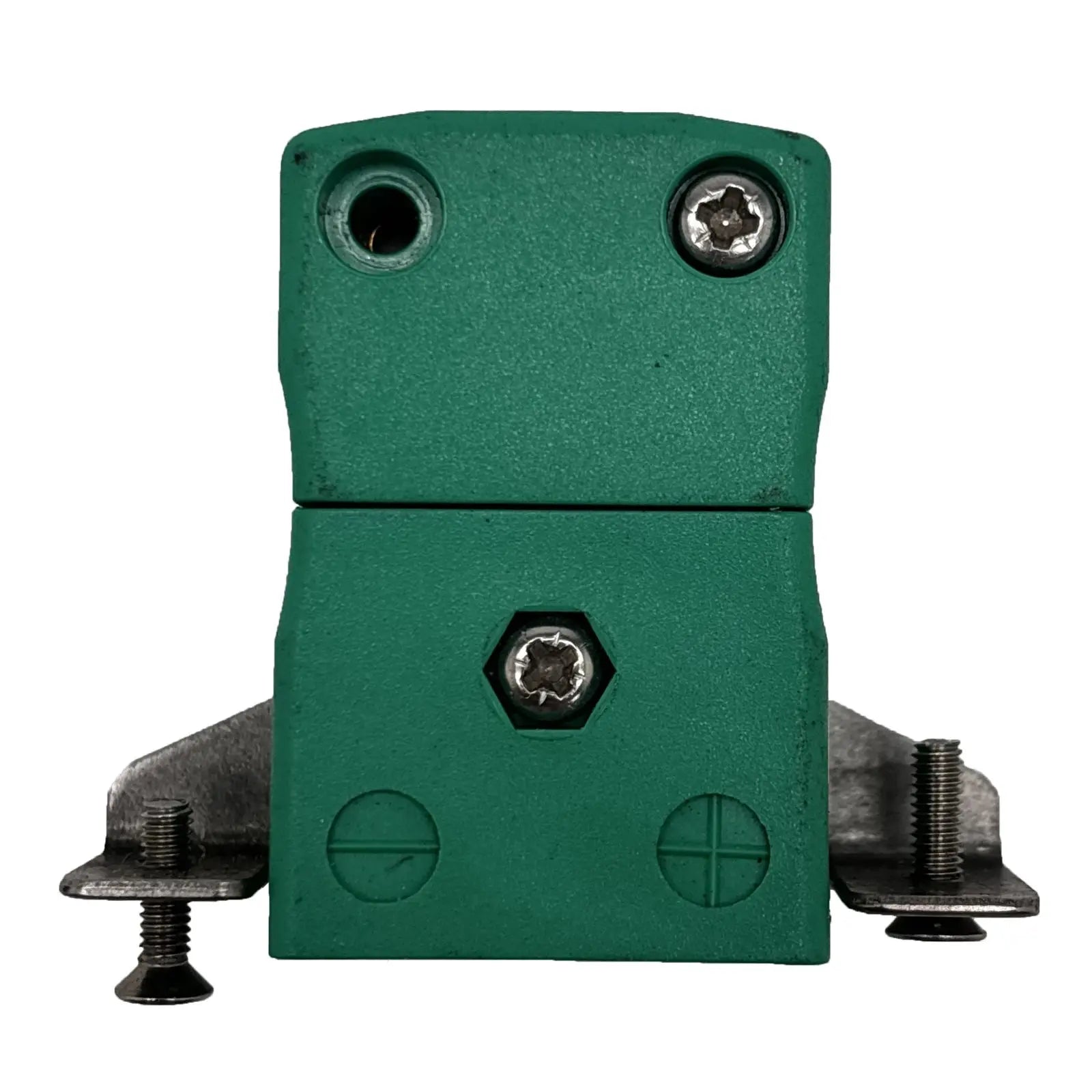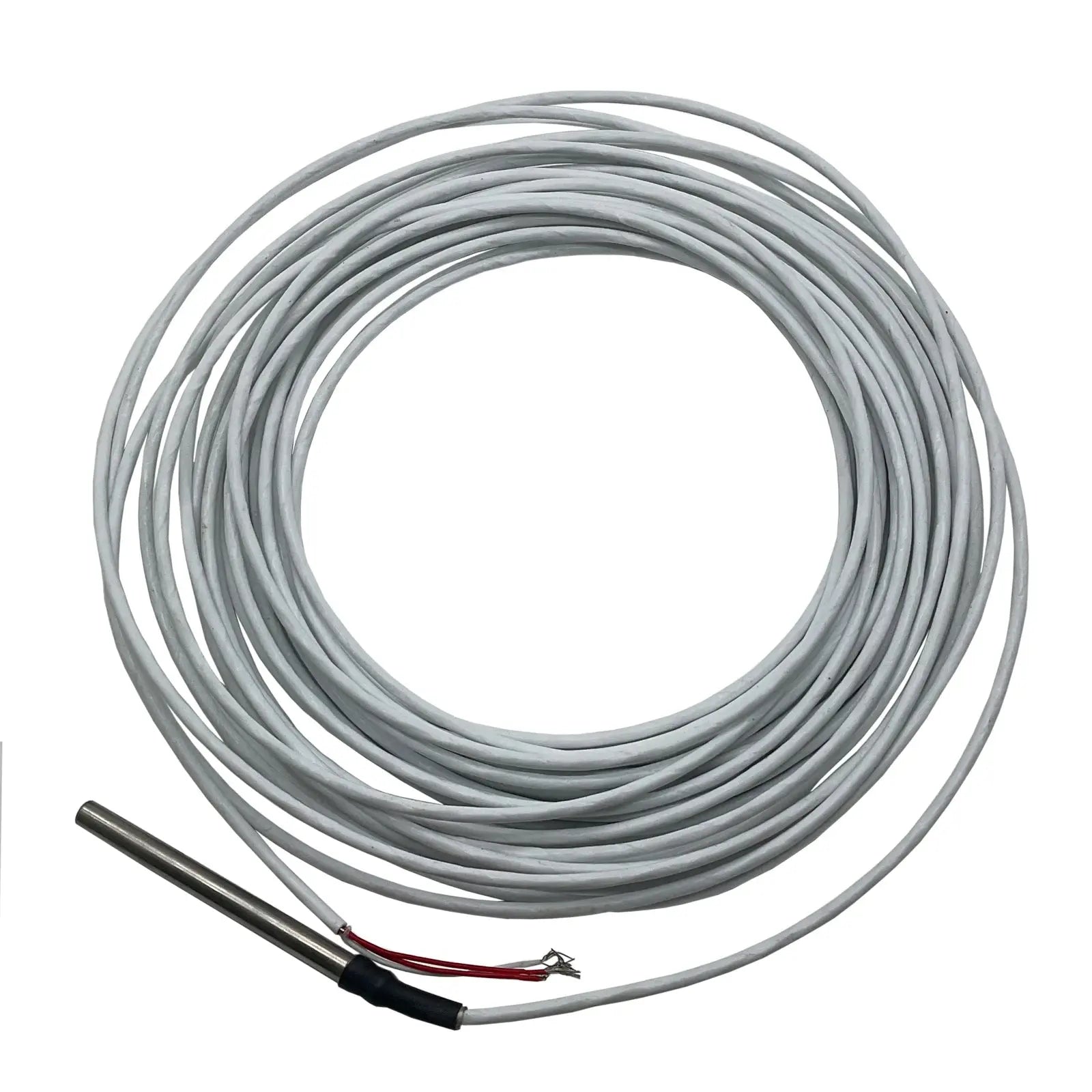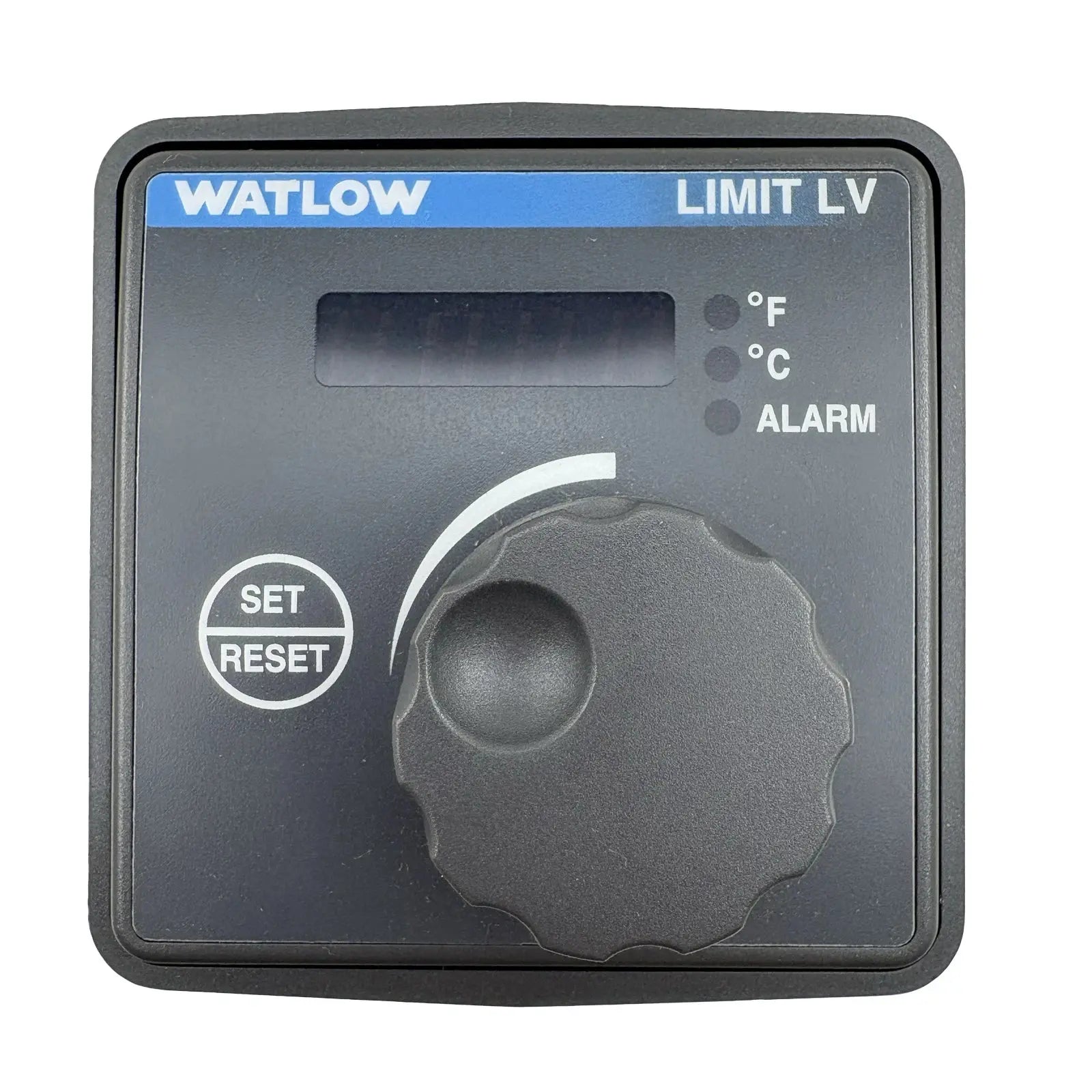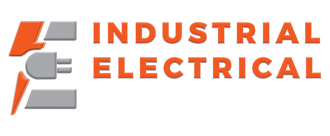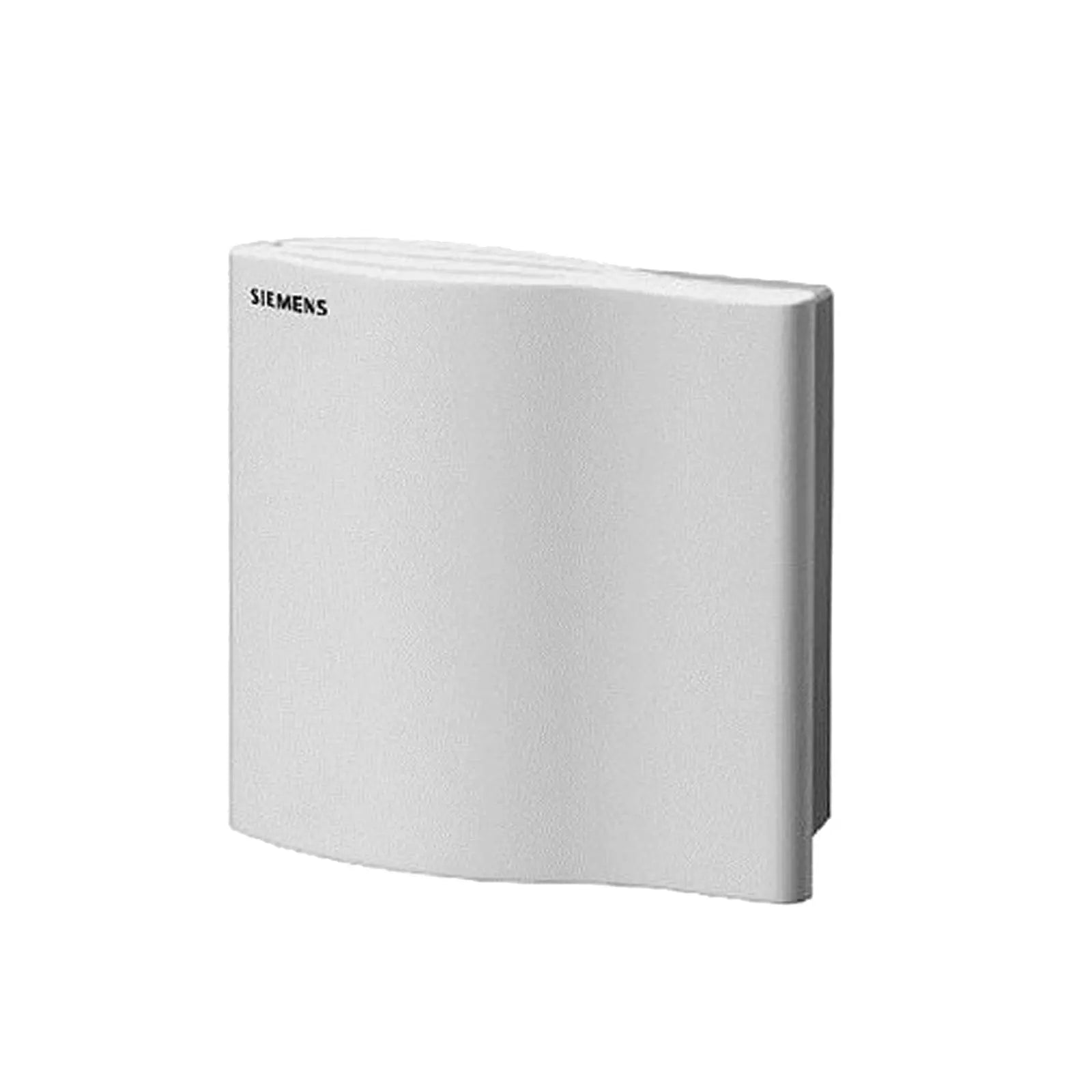Régulateurs de température : maintenir des conditions optimales pour les équipements
Les régulateurs de température jouent un rôle crucial dans le maintien de conditions optimales pour les équipements. Grâce à leur capacité à réguler la température, ils garantissent le fonctionnement des machines et des systèmes dans les plages spécifiées. Cela permet d'éviter la surchauffe, le gel ou tout autre problème lié à la température pouvant entraîner un dysfonctionnement ou une panne des équipements.
Comprendre le rôle des régulateurs de température
Les régulateurs de température sont des appareils qui surveillent et ajustent la température en fonction de paramètres définis. Ils sont couramment utilisés dans divers secteurs, tels que l'industrie manufacturière, le CVC et la recherche scientifique. En maintenant des niveaux de température précis, ces régulateurs améliorent l'efficacité, la précision et la fiabilité des équipements.
L'importance de la régulation de la température
La régulation de la température est essentielle dans de nombreux procédés. Par exemple, en fabrication, certains matériaux peuvent nécessiter d'être chauffés ou refroidis à des températures spécifiques pour obtenir les résultats souhaités. Sans un contrôle adéquat de la température, les variations de température peuvent entraîner des défauts, une mauvaise qualité du produit, voire des risques pour la sécurité.
Fonctions clés des régulateurs de température
Les régulateurs de température remplissent plusieurs fonctions essentielles pour assurer une régulation précise de la température. Ils surveillent en permanence les niveaux de température à l'aide de capteurs et les comparent aux valeurs de consigne souhaitées. Si la température s'écarte de la valeur de consigne, le régulateur active les mécanismes appropriés pour la ramener à la plage souhaitée. Ces mécanismes peuvent inclure le réglage des éléments chauffants ou refroidissants, l'activation des ventilateurs ou des pompes, ou encore la régulation de l'alimentation électrique.
Un aspect important des régulateurs de température est leur capacité à assurer une régulation précise et stable de la température. Ce résultat est obtenu grâce à des algorithmes avancés et des systèmes de rétroaction qui analysent et ajustent en continu la température en fonction des données en temps réel. En ajustant constamment la température avec précision, ces régulateurs garantissent le maintien du point de consigne souhaité avec un minimum de fluctuations.
Outre leur rôle dans la régulation de la température, les régulateurs de température jouent également un rôle crucial dans l'efficacité énergétique. En contrôlant précisément la température, ces appareils contribuent à optimiser la consommation d'énergie en garantissant que seule la quantité nécessaire de chauffage ou de refroidissement est appliquée. Cela permet non seulement de réduire le gaspillage énergétique, mais aussi de réaliser des économies pour les entreprises.
De plus, les régulateurs de température sont souvent équipés de divers dispositifs de sécurité pour protéger l'équipement et son environnement. Par exemple, ils peuvent intégrer des limites de température et des alarmes pour éviter la surchauffe ou le gel, susceptibles d'endommager l'équipement, voire de provoquer un incendie. De plus, certains régulateurs intègrent des mécanismes de sécurité qui arrêtent automatiquement le système en cas d'écart de température critique, prévenant ainsi tout accident ou danger potentiel.
Types de régulateurs de température
En matière de contrôle de la température, un régulateur adapté peut faire toute la différence. Heureusement, il existe plusieurs types de régulateurs de température, chacun ayant ses propres avantages et applications. Comprendre ces différents types peut vous aider à choisir le régulateur le plus adapté à vos besoins spécifiques.
Plongeons plus profondément dans le monde des régulateurs de température et explorons les différents types :
Contrôleurs marche-arrêt
Les régulateurs marche/arrêt sont les plus simples. Ils allument ou éteignent les éléments chauffants ou refroidissants lorsque la température atteint un seuil spécifique. Cette fonctionnalité de base les rend adaptés aux applications où la précision de la température n'est pas essentielle. Il est toutefois important de noter que ces régulateurs peuvent provoquer des fluctuations de température dues à des commutations brusques entre les états marche et arrêt.
Imaginez un scénario où vous devez maintenir une température constante dans une petite serre. Un régulateur marche/arrêt peut être une solution économique, garantissant que la température reste dans une plage acceptable. Cependant, si vous travaillez sur des processus sensibles nécessitant un contrôle précis de la température, d'autres options pourraient s'avérer utiles.
Contrôleurs proportionnels
Les régulateurs proportionnels sont plus avancés que les régulateurs marche-arrêt. Ils modulent la sortie proportionnellement à l'écart entre la température souhaitée et la température réelle. Cela permet une régulation plus précise de la température et réduit les fluctuations.
Imaginons que vous exploitiez un incubateur de laboratoire où le maintien d'une température stable est crucial pour la réussite de vos expériences. Un contrôleur proportionnel peut ajuster en continu la puissance de chauffage ou de refroidissement en fonction de l'écart par rapport à la température souhaitée, garantissant ainsi un environnement plus précis et stable pour vos échantillons.
Contrôleurs PID
Les régulateurs PID (Proportionnel-Intégral-Dérivé) sont les régulateurs de température les plus sophistiqués. Ils utilisent une combinaison d'algorithmes de régulation proportionnels, intégraux et dérivés pour ajuster en continu la sortie et minimiser les écarts de température.
Imaginez un processus industriel à grande échelle nécessitant un contrôle précis de la température pour garantir la qualité et la régularité des produits. Un régulateur PID peut gérer la complexité de telles applications, s'adaptant dynamiquement aux variations du système et assurant une régulation précise de la température. Grâce à sa capacité à prendre en compte les tendances de température passées, présentes et futures, un régulateur PID offre un contrôle et une stabilité inégalés.
Qu'il s'agisse d'une simple tâche de chauffage ou de refroidissement ou d'un processus industriel complexe, comprendre les différents types de régulateurs de température peut vous aider à prendre une décision éclairée. En choisissant le régulateur adapté à vos besoins spécifiques, vous garantissez un contrôle optimal de la température et améliorez l'efficacité et la fiabilité de vos opérations.
Choisir le bon régulateur de température
Choisir le régulateur de température adapté à une application spécifique est crucial pour garantir des performances et une fiabilité optimales. Plusieurs facteurs doivent être pris en compte :
Facteurs à prendre en compte
La plage de température requise pour le processus
L'exactitude et la précision nécessaires
Le temps de réponse nécessaire aux changements de température
Compatibilité avec l'équipement et le système
Contraintes budgétaires
Lors du choix d'un régulateur de température, il est important d'évaluer soigneusement la plage de température requise pour votre application spécifique. Un régulateur dont la plage de température est insuffisante peut entraîner des mesures inexactes et compromettre les performances. Que vous deviez maintenir des températures négatives ou travailler dans des conditions de chaleur extrême, il est essentiel de s'assurer que le régulateur de température puisse gérer la plage souhaitée.
L'exactitude et la précision sont également des facteurs essentiels à prendre en compte. Selon la nature de votre application, vous pourriez avoir besoin d'un contrôle précis de la température pour maintenir l'intégrité de votre processus. Ne pas respecter ces exigences de précision peut entraîner des variations susceptibles d'affecter la qualité de votre production. Il est crucial de choisir un régulateur de température capable d'offrir le niveau de précision requis pour votre application spécifique.
Le temps de réponse nécessaire aux variations de température est un autre facteur important à prendre en compte. Certains procédés nécessitent des ajustements rapides de température, tandis que d'autres peuvent tolérer des variations plus lentes. Il est essentiel de choisir un régulateur de température capable de répondre aux exigences de temps de réponse de votre application. À défaut, l'obtention de la température souhaitée peut être retardée, ce qui peut affecter l'efficacité globale de votre procédé.
La compatibilité avec l'équipement et le système existants est un facteur à ne pas négliger. Il est essentiel de choisir un régulateur de température qui s'intègre parfaitement à votre installation actuelle. Tenez compte des protocoles et interfaces de communication requis pour garantir un fonctionnement fluide et éviter tout problème de compatibilité.
Enfin, les contraintes budgétaires jouent un rôle important dans le processus de décision. Il est important de trouver un régulateur de température qui réponde à vos besoins tout en respectant votre budget. Cependant, il est crucial de trouver un équilibre entre coût et qualité. Opter pour un régulateur économique au détriment des performances et de la fiabilité peut s'avérer plus coûteux à long terme en raison de la maintenance et des pannes potentielles du système.
Erreurs courantes à éviter
Choisir un contrôleur avec une plage de température insuffisante
Négliger les exigences de précision
Ignorer le temps de réponse nécessaire aux changements de température
Ne pas tenir compte de la compatibilité avec l'équipement existant
Ne pas prendre en compte les coûts de maintenance à long terme
En évitant ces erreurs courantes, vous serez sûr de choisir le régulateur de température adapté à votre application. Prendre le temps d'évaluer les facteurs mentionnés ci-dessus vous aidera à prendre une décision éclairée et à optimiser les performances et la fiabilité de votre système de régulation de température.
Installation et maintenance des régulateurs de température
Une installation correcte et un entretien régulier sont essentiels au bon fonctionnement des régulateurs de température. Le respect des procédures et des directives établies garantit la longévité et la précision de ces appareils.
Procédures d'installation appropriées
Lors de l'installation de régulateurs de température, il est important de suivre les instructions du fabricant, les schémas de câblage et les consignes de sécurité. Une mise à la terre et des connexions électriques adéquates sont essentielles pour prévenir les risques électriques. De plus, une ventilation adéquate et un positionnement correct du capteur sont essentiels pour des relevés de température précis.
Lors de l'installation, il est essentiel de prendre en compte les facteurs environnementaux susceptibles d'affecter les performances des régulateurs de température. Par exemple, si le régulateur est installé dans un environnement industriel avec des niveaux élevés de poussière ou d'humidité, des mesures de protection supplémentaires peuvent être nécessaires. Il peut s'agir d'un boîtier résistant aux intempéries ou de l'application d'un revêtement protecteur sur le régulateur pour prévenir la corrosion.
Maintenance de routine et dépannage
L'entretien des régulateurs de température implique des inspections, un nettoyage et un étalonnage réguliers. Vérifier les connexions desserrées, les câbles endommagés et les composants usés peut prévenir d'éventuels problèmes. Un étalonnage régulier garantit la précision des relevés et du contrôle de la température.
Pour nettoyer les régulateurs de température, il est important d'utiliser les produits et méthodes de nettoyage appropriés recommandés par le fabricant. L'utilisation de produits chimiques agressifs ou abrasifs peut endommager le régulateur et affecter ses performances. Il est également important d'éviter toute exposition excessive au soleil ou à une chaleur excessive, car cela peut entraîner une surchauffe et un dysfonctionnement.
En cas de dysfonctionnement ou d'erreur, suivez les procédures de dépannage décrites dans le manuel d'utilisation ou faites appel à un professionnel. Les régulateurs de température sont des appareils complexes, et tenter de les réparer sans les connaissances et l'expertise nécessaires peut entraîner des dommages supplémentaires. Il est toujours recommandé de consulter un technicien qualifié ou le support technique du fabricant pour obtenir de l'aide.
L'impact des régulateurs de température sur l'efficacité des équipements
Les régulateurs de température ont un impact significatif sur l'efficacité et les performances des équipements. En maintenant des conditions de température optimales, ils contribuent à :
Améliorer les performances des équipements
Une régulation adéquate de la température garantit des performances constantes et fiables des équipements. En prévenant les problèmes liés à la température, les régulateurs de température minimisent les temps d'arrêt et améliorent la productivité globale. Ceci est particulièrement important dans les secteurs où de faibles variations de température peuvent avoir des conséquences importantes, comme l'industrie pharmaceutique ou l'agroalimentaire.
Prolonger la durée de vie des équipements
Les fluctuations de température peuvent solliciter les composants des équipements, entraînant une usure prématurée et une réduction de leur durée de vie. En surveillant et en contrôlant en permanence la température, les régulateurs de température protègent les équipements des excès de chaleur, de froid ou de cycles thermiques, prolongeant ainsi leur durée de vie et minimisant les coûts de réparation ou de remplacement.
De plus, les régulateurs de température offrent des avantages supplémentaires qui vont au-delà de l'amélioration des performances et de la prolongation de la durée de vie. L'un de ces avantages est l'efficacité énergétique. Les régulateurs de température peuvent optimiser la consommation d'énergie en ajustant les niveaux de température en fonction des besoins spécifiques. Cela réduit non seulement le gaspillage d'énergie, mais aussi les factures d'électricité, ce qui en fait une solution rentable pour les entreprises.
De plus, les régulateurs de température sont dotés de fonctionnalités avancées qui garantissent un contrôle précis de la température. Certains utilisent des algorithmes PID (Proportionnel-Intégral-Dérivé), qui analysent en continu les données de température et effectuent des ajustements en temps réel pour maintenir la consigne souhaitée. Ce niveau de précision et de réactivité est crucial dans les industries où même de légers écarts de température peuvent entraîner des problèmes de qualité des produits ou de sécurité.
En conclusion, les régulateurs de température jouent un rôle crucial dans le maintien de conditions optimales pour les équipements. Comprendre leurs fonctions, leurs types et les choisir correctement est essentiel pour une régulation efficace de la température. En installant et en entretenant correctement les régulateurs de température, les entreprises peuvent garantir la fiabilité des performances de leurs équipements, minimiser les temps d'arrêt, prolonger leur durée de vie, optimiser la consommation d'énergie et obtenir un contrôle précis de la température. Au final, ces avantages se traduisent par des économies de coûts, une productivité accrue et un avantage concurrentiel sur le marché.
Besoin de commandes en gros ou de recommandations d'experts sur IB-TC ?
Vous souhaitez commander des IB-TC en gros ou avez besoin d'aide pour choisir la solution industrielle idéale ? Notre équipe est là pour vous aider avec des devis personnalisés, des recommandations de produits et des conseils techniques. Que vous soyez électricien, entrepreneur ou chef d'entreprise, nous proposons des solutions sur mesure pour répondre à vos besoins.
📩 Contactez-nous ou discutez avec nous en direct pour une assistance instantanée !
Découvrez notre collection mensuelle d'offres de folie !
Profitez de réductions exceptionnelles dans notre magasin ! Découvrez les meilleures offres :
Explorez ces catégories maintenant et profitez des meilleures offres avant qu'elles ne disparaissent !
-
Tous les produits de notre gamme – Des produits de qualité supérieure sélectionnés avec soin pour vous.
-
Meilleures ventes – Articles préférés des clients et articles très demandés.
-
Offres spéciales et soldes Watts – Remises à durée limitée sur des produits incontournables.
-
Watts New – Nouveautés et dernières innovations.
-
Toutes les collections – Explorez tout ce que nous avons à offrir.
Explorez ces catégories maintenant et profitez des meilleures offres avant qu'elles ne disparaissent !
N'oubliez pas de consulter nos remises massives jusqu'à épuisement des stocks !










